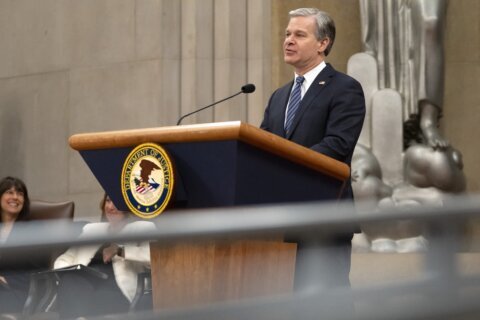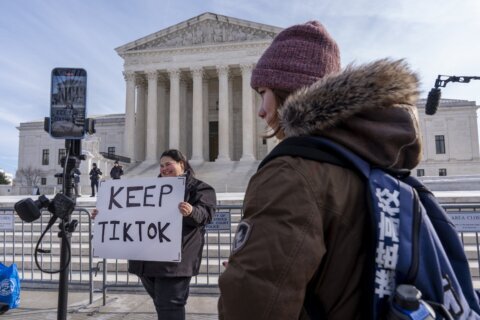Building a budget generally involves paying your essential expenses like rent, electricity, food and gas first. Once those are taken care of, you allocate what’s left toward savings, investments and other discretionary spending.
The pay-yourself-first strategy, however, takes a different approach.
How Pay-Yourself-First Budgeting Works
As the name suggests, pay-yourself-first budgeting prioritizes “paying” yourself, or saving money for yourself, before spending it on anything else.
“Instead of saving whatever’s left of your paycheck after you’ve paid your bills, you ‘pay yourself first’ by immediately depositing part of your paycheck into a dedicated savings account,” Mary Hines, head of consumer and small business products at Bank of America, said in an email.
Hines explained that you should leave just enough money in your checking account to cover your monthly necessities and a few small splurges.
“Most people prioritize paying their monthly bills and then neglect their savings — especially once other expenses leave their monthly funds dry,” Andrea Woroch, a consumer and money-saving expert, said in an email.
However, she said acting as if your savings are the most important bill forces you to live on less and ensures you never miss your monthly savings goal.
[Read: How to Make a Budget — and Stick to It.]
How Much to Pay Yourself
The amount you save each pay period will depend on your situation.
“If you’re thinking about paying yourself first, analyze your finances; separate your spending into essential and nonessential categories and set a realistic goal of how much you can save,” Hines said.
The goal could be a specific dollar amount or a percentage of your income, it’s up to you.
Kyle Enright, president of Achieve Lending, said in an email that either can work. “If you go with a percentage, experts generally recommend anywhere from 10% to 20% of your income. If you can do more, great; if you can do less, that’s fine. Just do it on a consistent basis,” he said.
“For a dollar amount, many people need to start small and gradually work up. Even if you saved $10 a week, you’d have more than $500 in a year. Up it to $100 a week, and you’d have more than $5,000,” Enright said.
Whatever amount you decide on, remember that it should change as your circumstances change.
[READ: How to Create a Saving Strategy]
“It’s important to regularly review and adjust how much you put towards savings. Financial situations are rarely static — your income might increase, your expenses could change or new financial goals might pop up — so regularly checking in helps make sure you’re on the right track,” Hines said.
Pros and Cons of Pay-Yourself-First Budgeting
Paying yourself first can come with both pros and cons that are important to consider.
Pros
On the upside, Woroch said the strategy can help you stick to your savings target and reduce overspending on other expenses. When you automatically transfer money to your savings account, you don’t give yourself a chance to think about spending it.
It can also help you achieve financial security. “By paying yourself first, you build a habit of saving regularly which grows your wealth faster over time,” Hines said.
Most experts recommend an emergency savings fund equal to three to six months’ worth of living expenses. The reality is — only about half of Americans (54%) have three months of expenses saved up, according to a 2023 survey from the Federal Reserve.
“The initial part of savings can go toward building an emergency fund so that you don’t rush to a credit card when the inevitable unexpected expense comes up,” Enright said.
Cons
On the downside, prioritizing saving can limit your financial flexibility and require tough lifestyle adjustments.
“It can be tough to adjust your day-to-day spending habits in order to pay yourself first, especially if you’re not used to saving regularly,” Hines said. She explained you might find yourself with less flexibility to enjoy your earnings.
“Though you may have to delay gratification, you’ll see that staying organized with your finances will keep you on track to achieving your future goals,” Hines said.
However, prioritizing saving may not be the best strategy if you currently have high-interest debt.
“If you’re carrying high-interest credit card debt, you may not be able to handle consistent savings. In that case, you must prioritize eliminating the debt. That could be through a balance transfer or a personal loan,” Enright said.
If making the minimum payments is difficult due to some type of financial hardship, he recommends looking into debt settlement.
[Related:Are Budget Apps Safe?]
Tips for Implementing a Pay-Yourself-First Strategy
When implementing the pay-yourself-first strategy, experts recommend you keep the following tips in mind.
“What makes this work is approaching budgeting not as a tool to restrict your spending, but rather as a plan so that you can better achieve the things you want in your life,” Enright said.
He explained that saving because “you’re supposed to” rarely works. Instead, he suggested saving because you want to or to eventually purchase something meaningful.
“Start not with percents or dollars, but by carefully considering and writing down goals — with your spouse and/or family as applicable. In general, you’ll have both short-term goals (maybe it’s to buy a new TV, buy a piece of furniture or take a vacation), and long-term goals (such as sending a child to college, buying a house and retirement),” Enright said.
Once you know how much you’re going to save, make it as easy as possible by setting up an automatic transfer to occur on each pay date.
“If you work for an employer that offers the ability to direct a portion of your paycheck to a savings account, great. If not, most financial institutions let you set up your own automated transfers from checking to savings accounts,” Enright said.
More from U.S. News
Mint Has Shut Down: Here Are the 5 Best Free Budgeting Apps to Use Instead
Best Budget Apps for Couples in 2024
Pay-Yourself-First Budgeting: What It Is and How to Do it originally appeared on usnews.com









